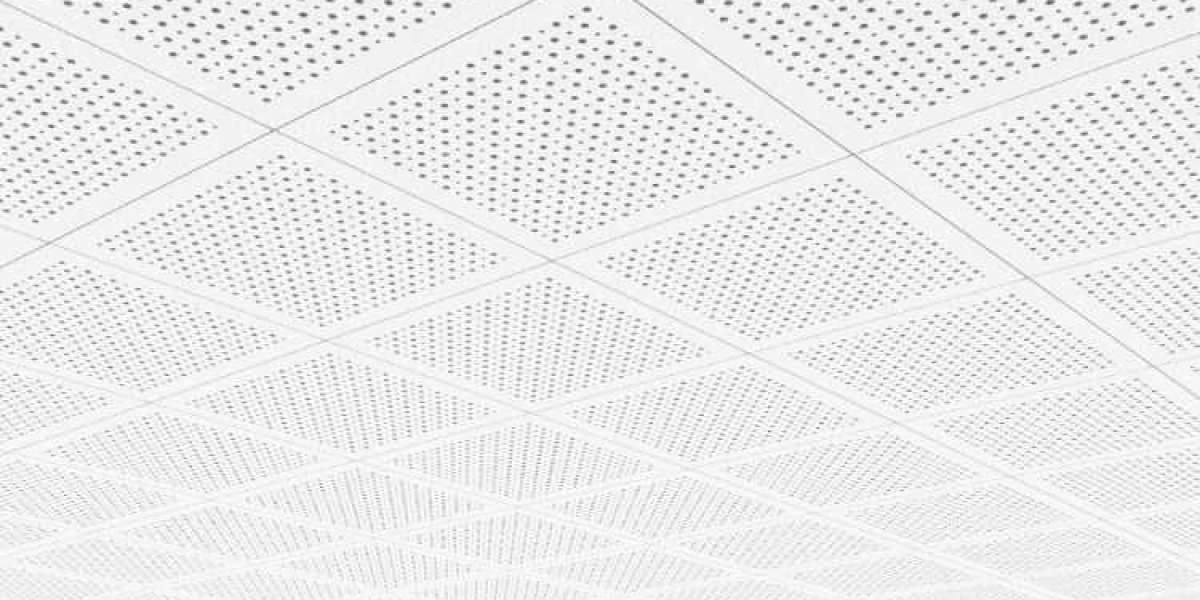The global Mineral Wool Ceiling Tiles Market Size is a significant segment of the building materials industry, known for its fire-resistant, sound-absorbing, and thermal insulating properties. In 2023, the market was valued at approximately USD 11.46 billion and is projected to grow at a compound annual growth rate (CAGR) of 5% from 2024 to 2032, reaching an estimated USD 17.82 billion by 2032. This growth is driven by the rising demand for energy-efficient building materials, an increase in construction activities, and growing awareness regarding fire safety standards.
Key Benefits of Mineral Wool Ceiling Tiles
Fire Resistance: Mineral wool is inherently non-combustible, providing excellent fire resistance, which is crucial for commercial and residential buildings.
Acoustic Performance: These tiles effectively absorb sound, making them ideal for environments requiring noise control, such as offices, schools, and hospitals.
Thermal Insulation: Mineral wool ceiling tiles offer high thermal insulation, helping to reduce energy consumption and improve indoor comfort.
Sustainability: Many mineral wool products are made from recycled materials, contributing to environmentally friendly construction practices.
Versatile Aesthetic Options: Available in various designs and finishes, mineral wool ceiling tiles can enhance the aesthetic appeal of any space.
Key Industry Developments
The mineral wool ceiling tiles market has witnessed several notable developments:
- Innovations in Manufacturing: Companies are investing in advanced manufacturing technologies to improve the quality and performance of mineral wool products.
- Sustainability Initiatives: Increasing focus on sustainability has led manufacturers to develop eco-friendly products, such as mineral wool tiles made from recycled materials.
- Regulatory Compliance: Stricter building codes and regulations regarding fire safety and energy efficiency have propelled the demand for mineral wool ceiling tiles.
Driving Factors
Several factors are fueling the growth of the mineral wool ceiling tiles market:
Rapid Urbanization: The global trend of urbanization is leading to increased construction activities, especially in developing countries, driving demand for ceiling solutions.
Rising Awareness of Energy Efficiency: Growing concern about energy consumption in buildings has led to increased adoption of energy-efficient materials, including mineral wool ceiling tiles.
Government Initiatives: Supportive government policies and incentives for green building practices are encouraging the use of mineral wool products in construction.
Expansion of Commercial Spaces: The rise in commercial construction, such as offices, hotels, and retail spaces, has boosted the demand for high-performance ceiling solutions.
Restraining Factors
Despite the growth potential, the mineral wool ceiling tiles market faces certain challenges:
Price Volatility: Fluctuations in raw material prices can impact production costs and, consequently, the pricing of mineral wool products.
Competition from Alternative Materials: The presence of alternative ceiling materials, such as gypsum and fiberglass tiles, poses a challenge to market growth.
Health Concerns: There are concerns regarding the potential health effects of mineral wool fibers, which may deter some consumers from using these products.
Market Segmentation
The mineral wool ceiling tiles market can be segmented based on several criteria:
By Type
- Acoustic Tiles: Designed primarily for sound absorption.
- Thermal Insulation Tiles: Focused on thermal performance.
- Fire-Resistant Tiles: Offering enhanced fire safety features.
By Application
- Residential: Used in homes for aesthetic and functional purposes.
- Commercial: Applied in offices, retail spaces, and healthcare facilities.
- Industrial: Employed in factories and warehouses for insulation and safety.
By Region
- North America
- Europe
- Asia-Pacific
- Latin America
- Middle East and Africa
Market Outlook
The mineral wool ceiling tiles market is poised for steady growth over the next decade. Factors such as increasing urbanization, rising energy efficiency standards, and a growing focus on sustainable building materials will continue to drive market demand. Additionally, technological advancements in product development will enhance the quality and performance of mineral wool tiles, making them an attractive option for various applications.
Trends
- Sustainable Construction: The trend towards eco-friendly building materials is expected to shape the future of the mineral wool ceiling tiles market.
- Smart Buildings: The integration of smart technologies in building design is leading to a higher demand for advanced ceiling solutions that support energy management systems.
- Customization: There is a growing trend for customized ceiling solutions tailored to specific design requirements and functional needs.
Regional Analysis
North America
The North American market is driven by stringent building codes and a strong emphasis on fire safety. The U.S. and Canada are the major markets, with increasing investments in commercial infrastructure.
Europe
Europe is witnessing a shift towards sustainable building practices, boosting the demand for mineral wool ceiling tiles. The region's focus on energy efficiency and environmental regulations supports market growth.
Asia-Pacific
Rapid urbanization and industrialization in countries like China and India are propelling the demand for mineral wool products. The growing middle class and rising disposable incomes are also contributing to the expansion of the construction sector.
Latin America and the Middle East Africa
These regions are experiencing steady growth in the construction sector, driven by infrastructure development projects and urbanization efforts. However, market penetration may be slower compared to more developed regions.
Key Players
The mineral wool ceiling tiles market features several key players, including:
- CertainTeed
- Armstrong Ceiling Solutions
- Rockfon (ROCKWOOL International A/S)
- Renhurst Ceilings Pty Ltd.
- Others
Opportunities and Challenges
Opportunities
- Emerging Markets: Expansion into emerging markets presents significant growth opportunities for manufacturers.
- Product Innovation: Continuous innovation in product features and sustainability can help capture a larger market share.
- Collaborations and Partnerships: Strategic partnerships with construction firms can enhance distribution channels and increase product visibility.
Challenges
- Market Saturation: Increased competition and market saturation can lead to pricing pressures and reduced profit margins.
- Health and Safety Regulations: Compliance with health regulations regarding mineral wool fibers may require additional investment and resources.



